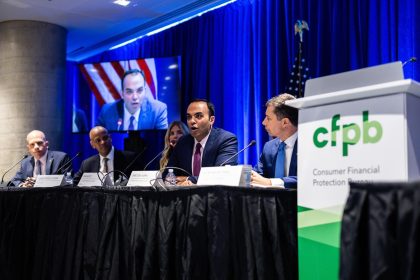If you’ve previously applied for a checking account and were denied, chances are the bank used a consumer reporting agency called ChexSystems to review your banking profile and saw a history of overdrafts, forced account closures, unpaid fees or other negative behaviors.
ChexSystems issues a consumer score that banks use to gauge the risk level of account applicants. Information on closed checking and savings accounts stays on your ChexSystems record for five years. So, if you have a flawed banking history, you likely won’t qualify for a checking account with all the standard services and conveniences.
The good news is that some banks and credit unions offer “second-chance” checking accounts to give people an opportunity to repair their banking histories.
What is second-chance checking?
A second-chance checking account is for customers with blemished banking profiles who can’t qualify for standard checking accounts. These special accounts usually have mandatory fees, more restrictions and fewer conveniences. But they give consumers a chance to stay in the banking system and prove that they can manage their accounts responsibly.
After six to 12 months of handling the second-chance account properly, the customer may qualify for a standard checking account with fewer fees and more conveniences. That may happen automatically or the customer may need to put in a request with the bank.
Pros and cons of second-chance checking accounts
A second-chance checking account has several benefits — and drawbacks. Second-chance checking account customers should not expect to get all the services a regular checking account offers.
Pros
- It gives high-risk banking customers access to many conveniences of a checking account, such as depositing cash, using debit cards and accessing ATMs.
- It helps people avoid using check-cashing stores that charge exorbitant fees or buying money orders to pay bills.
- If a person handles the account responsibly for six months to a year, they may be allowed to access a free or less restricted checking account.
- Responsible use of a second-chance checking account goes onto your ChexSystems report.
- Having a second-chance checking account at a federally insured bank or credit union is often much safer than dealing in cash.
Cons
- Monthly account fees are usually mandatory.
- Limits on debit card spending may be imposed.
- Overdraft protection might not be offered.
- Other standard checking account privileges may not be available. For example, Wells Fargo’s Clear Access Banking account doesn’t allow check writing.
- Second-chance checking customers may be required to set up direct deposit or take a brief course in money management before they can open an account.
Where to find a second-chance checking account
Second-chance checking accounts are more commonly offered by regional banks, online banks and credit unions than big, traditional brick-and-mortar banks. Online banks tend to charge lower fees because they don’t typically have branches to maintain. If you prefer branch banking and a more personal experience, check with community and regional banks in your area. Some big banks, like Wells Fargo, offer second-chance checking accounts, so don’t rule out the traditional banks before asking.
The table below provides some information about a few banks and credit unions that offer second-chance checking accounts.
| Financial institution / Name of account | Monthly maintenance fee | Minimum deposit to open |
|---|---|---|
| Chime/Second Chance Banking | $0 | $0 |
| Varo Bank/Second-Chance Banking | $0 | $0 |
| Wells Fargo/Clear Access Banking | $5 (no fee if account holder is 13-24 years old or if other requirements are met) | $25 |
| Woodforest National Bank/Second Chance Checking (serves 17 states, mostly in the South and Midwest) | $9.95 (with monthly direct deposit; $11.95 without direct deposit) | $25 |
| Gold Coast Federal Credit Union/Fresh Start Checking (serves part of southeast Florida) | $10 | $5 |
| OneUnited Bank/U2 E-Checking | $0 | $25 |
How to choose the right second-chance checking account for you
Banks and credit unions differ in their account offerings. Look for checking account features and services that are most important to your daily financial needs. Then use the account responsibly so that you can graduate to a regular checking account.
Features to look for in a second-chance checking account include:
- Low or no monthly service fees
- Low or no minimum balance requirements
- Access to online and mobile banking
Alternatives to second-chance checking accounts
Prepaid debit card
There are ways to pay bills and make purchases without a checking account. A prepaid debit card is one tool. A prepaid debit card looks and works much like a debit card, but unlike a debit card, it’s not tied to a bank account. Money is loaded onto the card which limits the amount a cardholder can spend. When the funds are exhausted, the card can be reloaded with more funds.
Prepaid debit cards help you budget your money and control spending, but they do come with fees, so that’s something to ask about before you choose a card. You can get prepaid debit cards at banks, through Visa and Mastercard, and at some retailers, such as Walmart, among other sources.
Secured credit card
A secured credit card is another alternative to a second-chance checking account. Secured credit cards, provided by banks and credit card issuers, are suited to people with a bad or limited credit history or no credit history. The card is backed by collateral, which is usually a deposit. Spending is limited to the amount of money deposited onto the card.
Responsible use of a secured credit card is a good way to raise your credit score and control spending. But watch out for fees and high annual percentage rates (APRs), especially if you don’t pay your card balance in full and on time.
Bottom line
A second-chance checking account can be a valuable money management tool if you’ve previously been denied a standard checking account due to a history of overdrafts or other problems. A second-chance account can help you eventually move on to a regular checking account, which comes with more privileges and fewer restrictions.
— Libby Wells wrote a previous version of this story.
Read the full article here

















